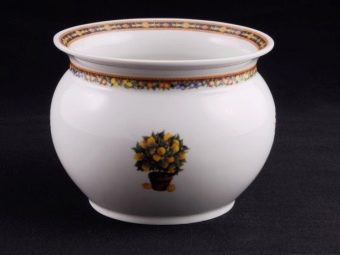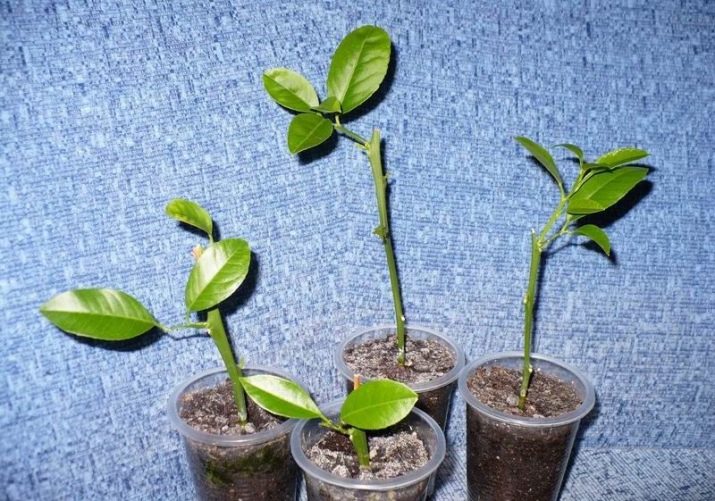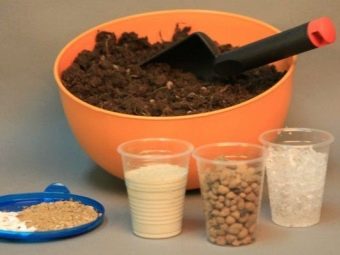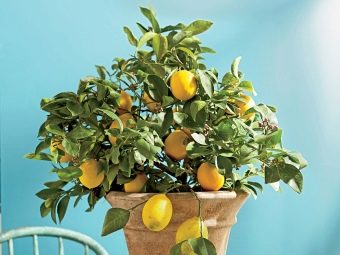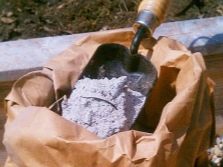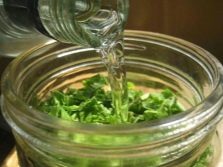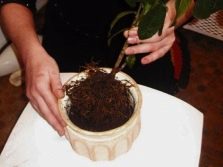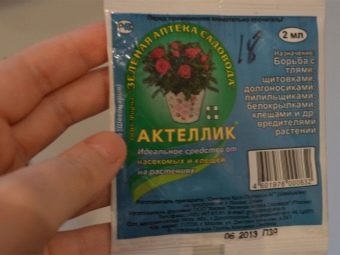How to grow a lemon tree at home?
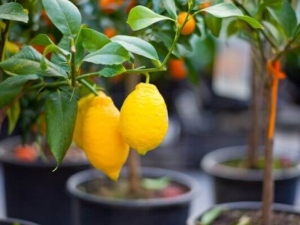
Growing a lemon tree at home is not so difficult, but some knowledge will be needed.This plant is originally from India, therefore, the first condition for its successful growth is a favorable climate.
Variety selection
If you have decided to plant a lemon tree in your house, then the first thing you should think about is which variety to choose. Today, many varieties are popular, but not all of them are suitable for beginners. This is due to the complexity of caring for some plants of the most common varieties.
So, first of all you need to decide how much time you are willing to devote to the care of the lemon tree. If you can periodically feed, deploy it, monitor the intensity and frequency of watering, shade the windows when needed, then you can safely choose the "capricious" varieties. If such actions are too complicated for you or you do not have time to do all this, then stop at the simpler version.
Also important is the fertility of the plant. Think about why you actually need a lemon at home. Maybe you just like the look of lemon trees. You may be attracted by the prospect of a citrus scent throughout the house. For some, the ability to harvest and eat their own crops is important. Someone wants to self-grown lemons also give. Depending on what you choose, and select the appropriate grade.
You also need to pay attention to how a particular plant reacts to climate change. Perhaps you want to take a lemon tree with you to your summer cottage in the summertime and plant it there or simply transfer it to the garden. Some species do not withstand such experiments, others react extremely favorably to such actions.
Carefully study the varieties and their characteristics, and only on the basis of the knowledge gained, determine which variety is right for you.
"Genoa"
Not so long ago, this variety belonged to the rarest representatives. It could be found only in private collections of citrus fruit or in specialized nurseries. However, over time, the situation has changed radically, and now the Genoa variety is quite common. There are no problems with the purchase of such a sample.
This variety has been known since 1875. For the first time he was appreciated in the United States, where he was brought from Italy. Since then, breeders have been constantly working on the qualitative characteristics of the Genoa lemon tree and, as they say, brought it to mind.
Lemon of this variety is famous for its taste. It is believed that Genoa lemons are among the most delicious, so it is not surprising that over time this plant became so common. It also differs in aesthetic appeal. The tree grows small, biologists attribute this variety to low growth. If we talk about how high the apartment options are, the tree is no higher than one and a half meters. In the greenhouses, everything is a little different: here “Genoa” reaches 3 m in height.
Difficulties with the cultivation of these citrus occur in beginners. Genoa is extremely demanding of lighting: the lack of light, like its excess, is bad for fruiting and the general appearance of the tree. Also the grade is exacting to watering and leaving. Therefore, lovers of indoor plants, just starting their way, it is not recommended to choose this species.
Panderoz
Lemon "Panderosa" was the result of crossing a lemon of another variety, which is unknown, and citron. Scientists are still arguing whether this happened by accident or the variety was purposefully bred in the United States. However, this species has become one of the most popular for breeding at home.
The main distinguishing feature is the large beautiful pear-shaped fruit. If you grow a decorative lemon "Panderoz" in the garden, you can get fruits weighing up to half a kilogram. At room dilution lemons reach 200 g of weight. Taste and smell pleasant, with pronounced citrus notes.A fully ripe fruit has a juicy flesh, which is not as acidic as the other varieties.
The plant is picky. The main condition is that the lemon tree should be well lit. For this, the windows facing south are ideal. You also need to monitor such characteristics as the regularity of watering and the presence of pests. Unfortunately, the variety “Panderosa” is more prone to their appearance. It is important that the container is of sufficient size.
If possible, give the plant "to catch your breath." It is necessary from time to time to put it at the open window or transfer to the loggia or balcony. The plant tolerates high temperatures well, but is absolutely not adapted to cold.
In this regard, it is imperative to warm the place of his detention for the winter: do not open the windows, do not lean the tree against the window, monitor the proper amount of light. The temperature should not remain below +10 degrees.
"Mayer"
The variety "Mayer" is also called the "Mayer lemon". This evergreen tree differs from the others in its ability to bloom and bear fruit several times a year. In addition, other characteristics are different: the size, taste and smell of the fruit.
Since this variety is exclusively room, the need to make a plant "breathe" will not. Fruits have fewer seeds. Their skin is thinner and the aroma is brighter. In this regard, such a lemon plays the role of air flavor, filling the entire space with a citrus scent. Fruits are more acidic and small.
Lemon "Mayer" refers to the dwarf. This variety does not require a constant stream of sunlight. It is much more favorable to place it where the light is diffused. The east and west sides are perfect for this. In winter, you need to take care of sufficient insulation. The plant does not withstand temperatures below 12 degrees or above 20 degrees. Note that a relatively high temperature is an important condition for fruiting lemon. If the "Mayer" will freeze, then the lemon harvest, you will not wait.
The lemon tree of this variety sensitively reacts to the slightest changes in the microclimate. Above it was said that it is exclusively indoor, therefore putting it outside or in the garden is not the best idea. As a result, instead of increasing fruiting and improving the color of the leaves, you get the opposite result. The plant will simply lose both the leaves and the fruits, if they already exist.
It is important to monitor the humidity in the room. If it is insufficient, the plant will be attacked by various pests. Humidity should be at the level of 60-70%.
"Pavlovsky"
This species comes from Turkey. The variety "Pavlovsky" was introduced by the merchant I. S. Karachistov. Of course, in the future, scientists repeatedly crossed the original variety, so the result was a modern Pavlovsky lemon with all its inherent characteristics.
Lemon tree refers to the dwarf and rarely exceeds the height of a half meter. At home, you can meet meter plants more often. They consist not of a single whole trunk, but grow in the form of bushes with 3-4 thin stems. The crown in diameter is the same as the height - about a meter. Thorny branches.
Abundant blooms occur twice a year: in spring and autumn. Flowering begins early after planting a tree - already for 2-3 years.
However, the disadvantage is that early flowering has a bad effect on the general condition of the plant, therefore it is recommended that all appearing flowers be completely removed for 2-3 years, and 4 - all are too close to each other or weak.
Lemon begins to bear fruit after 3-4 years, but the most complete crop can be obtained only after 15-20 years. For the first time the plant gives only 1 fruit, in the future - 2-4 fruits, not more. Complicating matters is also the fact that in some cases there is not enough lighting, so the fruits are tied and ripen longer than usual.If you do not remove ripe fruit in time, they will continue to grow, losing their pleasant taste. The flesh will become rough and tasteless, the skin - too thick. Therefore, it is important to harvest in time.
You can often find fruit without seeds. Usually they are few - no more than 10 pieces. In the bulk of the fruit still have bones, but they are few - 10-20 pieces per fruit.
"Kursk"
This variety was popular in the Soviet Union. Then it could be seen on almost every window sill of indoor plant lovers. Now this variety is not so popular due to the fact that many foreign hybrids have appeared, having more tasty and fragrant fruits and requiring less scrupulous care.
Lemon "Kursky" has an attractive appearance. The plant has a spreading mighty crown on thick branches with spikes. This is both a plus and a minus grade. Due to the fact that the crown is spreading, it will not be able to grow on an average sill. No pruning is able to cope with the abundant growth of branches in all directions.
Leaves are beautiful, saturated green color. They have an atypical form: they are not round, as usual, but feather-like, and often several times narrower in width than in length.
The grade "Kursky" is one of the most cold-resistant plants. It can be grown at a temperature not lower than +4 degrees, but we do not recommend taking risks. Acceptable temperature - + 10-15 degrees.
Lemon tree of this variety is high-yielding. Under ideal conditions, it can produce up to 30 fruits per year weighing 200-250 grams each. If you grow a lemon outdoors, the weight of the fruit can reach half a kilogram. If the conditions are not observed, the fruits will be small: only 150-170 grams each.
Fruits are pear-shaped, dark yellow. The taste is typical. Lemon pulp is sour, but not bitter. Fruits are juicy. The skin is thin and smooth, not bumpy. Another plus is that fruits can be stored for a long time. They are well tolerated transportation.
Novogruzinsky
Today the variety "Novogruzinsky" is the most high-yielding. Despite the fact that he has been known for a long time, no one has yet managed to surpass him in the number of fruits collected from a single lemon tree. Even in the vast Soviet Union, he was popular. By the way, the Kursk variety was bred just on the basis of Novogruzinsky.
Lemon "Novogruzinsky" great for decorative breeding. It fructifies once a year, but abundantly. Under natural conditions, the height of the plant reaches 2 meters, at room dilution - 1.5 meters. The crown is wide and spreading, so be sure to allocate free space under this lemon tree. The leaf color is light green, the leaves are slightly elongated.
Fruits are attractive and fragrant, having a slightly elongated shape. Peel thickness up to 5 mm, without tubercles, shiny. The fruits are small. Weight rarely exceeds 120 g. However, the flesh is juicy, aromatic, moderately sour.
It is worth noting that the lemon begins to bear fruit only on the 5th year after planting. It pays off by the fact that no care is required for it. Neither the humidity of the air nor the condition of the soil have any significant effect on the state of the plant and on its ability to bear fruit.
However, keep in mind that it is better to expose a pot with a lemon tree near the window, which faces south or east. At the same time it is impossible to allow hit of the scorching sunshine on a plant. The window must be shaded. Every week, the tree must be turned 10-15 degrees so that the crown is formed evenly and all the leaves receive the same amount of sunlight.
In winter, the time required to change the intensity of irrigation, so that the lemon "rested."
"Lunario"
This variety is very different from the rest of its flowering phases.If the other species flourish depending on the time of year, then "Lunario" - every new moon. Therefore, when planning all the maintenance work, you need to focus not on the season, but on the phases of the moon.
So, "Lunario" blooms all year round, so at each moment in time an adult tree and fruits, and has immature fruits, and blooming flowers and buds. This variety is considered to be undersized. In room conditions, the height of the tree rarely exceeds one and a half meters, in rare cases it can reach two meters. The leaves are emerald green, dark, smooth, shiny, large. Often their length reaches 15 cm. The spikes on the branches are long and sharp, reaching 4 mm in length.
Fruits have an oblong oval shape. The color is unsaturated, pale yellow, sometimes even greenish. Therefore, compared with ordinary lemons, it seems that the “Lunario” fruits are unripe, but this is not so. By its taste, the pulp is not inferior to the other varieties. It is sour and aromatic, there are few pits in it, which is also a plus.
For Lunario, light is an important factor. This does not mean that there should be a lot of direct sunlight. Just the opposite: diffused light is very important, so the window needs to be shaded. Especially important is the lighting in winter. Since the day is short, will have to take care of artificial lighting.
Do not expose the lemon tree drafts, otherwise it will shed its leaves. Also, "Lunario" does not tolerate low temperatures and insufficient air humidity, so keep a close eye on the microclimate in the room.
Spray the tree with room temperature water to maintain an optimal humidity of 60-80%.
Preparatory work
Before you start planting a lemon, you need to pay attention to several significant factors. It has already been mentioned above that for some varieties the choice of soil and place is important, for others it is not. Naturally, the plants from the first category will need more thorough preparation.
Depending on how well the “homework” was done, the lemon will grow sprawling and beautiful or low and with small fruits. Be sure to pay attention not only to the soil, but also to the place where the plant pot will be located. For some lemon trees, a small area on the window sill is sufficient; for others, a large amount of free space will be required. Plays the role and illumination area. For some varieties it is more important than for others.
Finally, another significant condition is the capacity in which a decorative lemon is planted. The material of which the pot is made is not so important. It can be either ceramic or plastic, or metal - there is not much difference. Note that tall and narrow pots are suitable for lemons. Their diameter must be no more than 15 cm. When you decide to transplant the plant to another pot, make sure that the new one differs in height, but not in diameter. The 15 cm rule works here.
There must be holes at the bottom of the tank so that excess moisture does not collect at the bottom, leading to rotting of the roots, but out. You will not need too high pot, as the roots of the plant are quite compact.
Choice of place
It is necessary to have a plant pot in a house or apartment in well-lit places. Although it cannot be said that a lemon is a capricious tree, it cannot be thrown on the balcony and forgotten, occasionally watering. It is important to pay attention to the microclimate. The future yield of the plant and its appearance depend on how suitable it is.
It should be noted that the lemon reacts sensitively to temperature fluctuations, so take care of a stable temperature background. The ideal place from this point of view is the location in the room without drafts. Choose window sills or floor space at the panoramic windows, which are not unusual for today.Your lemon tree will thank you for this.
The catch is that it is also impossible to expose the tree to the scorching sunlight. Indeed, the lemon responds well to the sun in the early morning or before sunset, but the midday heat is contraindicated. Therefore, the windows need to be shaded for several hours in the middle of the day, then reopened, opening access to the light. For this fit ordinary curtains or blinds.
It is important not to block the flow of sunlight completely, as this will negatively affect the fruitfulness and general condition of the crown.
You can not place a lemon on the windowsill, under which there is a heating radiator. Also, the presence of a heater or an air conditioner is prohibited. The fact is that the constant temperature conflict between the heating / cooling equipment and the air in the room will negatively affect the condition of the lemon, and as a result, the plant will lose its leaves and fruits. Unfortunately, to completely neutralize the negative impact of the wrong choice of location does not work, but it can be smoothed out by daily watering and unfolding the plant.
Of course, the ideal place to grow lemon at home is a winter garden or greenhouse, but not everyone has the opportunity to make such a room in their home. So try to choose the best place from those that are available.
The soil
The soil for the lemon tree must be properly drained. It is good drainage - half the success. Ordinary land for seedlings or dug in the garden area will not work. You remember that the plant comes from India. Consequently, he also needs a special land intended for citrus fruits.
The best drainage fillers are:
- expanded clay;
- sand + wood ash.
In the first case, the filler can be bought at the garden store, in the second - at home. Medium river sand and ash are required. Experienced gardeners recommend using wood ash from under the conifers, as it is rich in essential trace elements.
If for some reason you cannot buy ready-made citrus soil, you can prepare the usual soil yourself so that it becomes more suitable for growing lemon. There is a whole formula:
- 3 cups of soil with humus (it is better to take the forest);
- 1.5 tablespoons of wood ash;
- 0.5 cups of river midfraction sand;
- water.
The amount of water is determined along the way. The mixture should not be very liquid - like cream or sour cream. The drainage prepared in this way is useful just before planting, because the roots of the lemon tree will need to be drowned in it.
Thus, the preparatory work can not be called unnecessarily energy-intensive, but they greatly simplify all the procedures for further care, since less fertilizer and other things are required.
It is not recommended to neglect the selection of the site and the preparation of the soil, as well as the choice of a suitable container for planting a lemon.
Breeding
It would seem that the most logical that can be assumed - a lemon can be grown from the existing bone. Indeed, this approach is the place to be, but it is not without a large number of shortcomings:
- very long term germination and overall growth;
- it is necessary to make great efforts for the seed to grow at all;
- and most importantly - such a lemon will not bear fruit.
In this regard, the best breeding option is grafting. Propagation by cuttings is much simpler and more preferable, which is why:
- don't have to wait too long for the lemon to sprout and form;
- the plant will bear fruit in any case, and sometimes fruiting may occur as early as 3-4 years after planting;
- It is much easier to choose good seedlings than good seeds, and at the same time you will be almost one hundred percent sure that you got exactly the variety you wanted;
- if you plant cuttings according to all the rules, the plant will develop properly, which is not the case with seeds.
On the other hand, there are cases when a purchased seedling is infected with a disease or pest. In this case, you need time to resort to proper treatment.
If you do not have experience in breeding, you do not plan to resort to cross-pollination, then we strongly recommend that you buy a ready seedling for further planting. Only in this case you can get a guaranteed harvest in the future. Also, directly in the nursery or from specialists, from whom the cutting is bought, it is possible to clarify information about the care of a particular variety. They will gladly share their secrets.
How to plant?
Planting lemon sprouts is as follows.
- First you need to prepare the ground for citrus, in the absence of such, it is necessary to prepare a special mixture (it was mentioned above).
- After the mixture is ready, you must place the lemon in an empty pot, then fill it with the mixture. Please note that the mixture should only cover the roots, and not fill the entire pot.
- From above, you can pour ordinary soil. Strongly tamping it is not necessary.
- Liberally water the plant. If the earth is "sat down", add the missing and again moisten everything. Pour out all the water released through the drainage holes in the tank so that the cavity under the flower pot is dry.
In general, the process of planting itself is not difficult. In the case when you are not using a homemade mix, but already ready soil from a flower shop, the procedure is simplified utterly: you need to place a lemon sprout, sprinkle with soil, soak well, add the missing ground and again water it thoroughly.
The first days you need to carefully observe the plant. If the first signs of a disease or pest appear, treat the plant in a timely manner before it has managed to infect nearby specimens.
Care
It is important to properly care for your lemon tree so that it grows beautiful and healthy and gives a good harvest. Be that as it may, the main requirement is the high aesthetic characteristics of the houseplant. If it is not pleasing to the eye, it is unlikely that someone will want to keep it on its windowsill.
Proper care consists of three components: proper pruning, timely feeding and suitable watering. All these processes depend on the time of year and the age of the plant, so first of all you need not to grab at least something, but to study and in what case and how best to act.
Lemon tree cannot be left without care. New shoots grow, roots rot, nutrients are inadequate - these are the results of neglect of care procedures. Lemon - the plant is not the most capricious, but the most basic care it is positively needed. Please note that if you take care of him properly, he will delight you with bright emerald green and rich yellow tasty fruits.
Of course, this or that specificity of care is largely due to the type of plant, but the basic rules are the same. This concerns more pruning and feeding, since the intensity and frequency of watering is more dependent on the variety. For example, those varieties that came from Italy and those that were brought from Turkey, will require both different temperatures and different irrigation. Some will need to be watered every other day, others - once every three days.
Pruning
In the first place in importance is exactly the trimming. From how well and in a timely manner it is carried out, depends on the shape of the crown, the level of yield and the size of the fruit. However, the foundation is precisely the beautiful crown. After all, the main task of indoor plants - to please the eye.
So, in the first year of life, the shoots become 30-40 cm higher. During this period, you cannot touch the plant, otherwise you risk completely ruining the shape of the crown.
In the second year of life in the spring you need to strongly cut the escape, leaving it as a result of 20-25 cm in height. This is done so that the shrub begins to branch out. After such a procedure, beautiful lateral shoots appear.
In the future, proceed to the correction of the lower shoots. They must be cut off completely. All that needs to be preserved is the top three shoots from which the crown will be formed. It is not recommended to leave more or less shoots, as in this case the proportions will be violated.
In the third year of plant life, do the above procedure from the very beginning with the upper shoots, first shortening each of them to 20 cm, and then cutting off from each of all the lower shoots, except for the top three. By trimming you stimulate the development of lateral shoots so that the crown is sprawling.
Note that it is enough to bring a similar trim to level 5-6. That is, for many years you will have to do the same with the newly grown new shoots, acting in the same way, but in the end you will get a beautiful plant with a gorgeous crown and a healthy look.
After you “bring to your mind” your lemon tree, it will be enough just to remove new shoots. Work on the shape of the crown will be reduced only to this.
Top dressing
One of the rules for the care of decorative lemon is the timely application of fertilizers. It is possible to feed a lemon tree by many means - organic and not only.
For the first time it is advised to apply fertilizer only after the tree has reached 2-3 years of age. Initially, for the full growth of those nutrients that are contained in the soil. As soon as stocks run out, it is necessary to replenish them so that it does not affect the quality of the lemon tree.
Feed the plant at a time when it is actively flowering. Traditionally, the flowering phase falls in the spring or early summer. In this period of time it is necessary to fertilize every 2 weeks until autumn. With the onset of autumn, it is necessary to fertilize lemon much less often - once in 6 weeks.
Pay attention to the important rule for making any fertilizer. A couple of hours before starting to feed, it is necessary to pour a lemon well with clean water. This will allow fertilizer to quickly penetrate the bud to the very roots of the plant. Consequently, the effect of their introduction will become more pronounced.
Most preferred are the following types of organic fertilizers.
- wood ash;
- birch tincture;
- highly diluted manure.
It is necessary to apply organic fertilizers in the same way as mineral fertilizers, with the only difference that the dosage will have to be treated more scrupulously. For example, diluting manure, you need to ensure that its concentration is 5-6 times less. As for the birch tincture, it is made according to the following scheme:
- a glass of leaves pour 0.5 liters of water;
- soak in a cool dark place for 2-3 days.
The effect of mineral and organic fertilizers is about the same.
Watering
No less important than pruning and dressing, watering plays. It is important to properly moisten the plant so that the roots do not rot, and the earth does not swamp. You should also not allow excessive dehydration: this will cause the lemon tree to shed its leaves.
During the year there are several phases, each of which requires the use of different irrigation schemes.
May-September
During this period of time it is recommended to water the plant with moderate intensity once every two days.
October-April
In winter, you need to water the lemon no more than once a week, otherwise the cycles of flowering and rest will be broken.
Pay attention to the quality of water for irrigation. Be sure to warm it up to room temperature, allowing it to stand for 5-6 hours. Watering should be non-directional, uniform. It is best to moisten the entire area of the pot.
In the summer, it is recommended to periodically spray the lemon tree.Use for this better boiled water at room temperature. Otstoyannaya not fit. The same applies to the winter period, especially if there is heating equipment in the same room that dries the air.
Please note that regular spraying is often more important than timely watering. This is due to the fact that a humid atmosphere is more important for a lemon tree than a moist soil; the lion's share of moisture it gets through the leaves and bark.
Diseases and pests
Like any other indoor plant, lemon is often attacked by pests or diseases. In order to respond in time, you need to "know the enemy by sight." Therefore, carefully read how this or that pest manifests itself and how to deal with common symptoms - falling and yellowing of leaves, twisting of leaves, the appearance of sticky deposits or honeydew.
The leaves turn yellow
Pay attention to the fact that yellowing of the leaves is most often a reaction not to the disease, but to improper care. Lack of light or insufficient watering is the first thing to think about if the crown of your lemon tree starts to turn yellow.
Also think about doing an extra feeding. Yellowing of the leaves is a powerful indicator that the lemon lacks nutrients. It is not necessary to be wise and fertilize one by one. The “mighty triple” potassium + nitrogen + phosphorus will work best in this case.
It so happens that there seems to be enough light coming in, but the daylight turns out to be too short. It is important to provide the lemon with a 12-hour inflow of light. If you are unable to organize natural light in this way, think about connecting an artificial backlight. A great alternative to the sun is fluorescent lighting. Under its influence in the leaves photosynthesis will proceed in the same way.
It happens and vice versa. If the plant is located under the scorching rays, unprotected, then the appearance of burns on the leaves is possible. They will react in the same way as in the case of insufficient lighting - they will turn yellow. To prevent this, at the time of the peak of solar activity, either shade the windows, or take the lemon tree away.
If only the tips turned yellow, this indicates a lack of moisture. Enter into the schedule of care procedures daily spraying with boiled water at room temperature. If you have a humidifier, you can place it near the lemon tree to create around a favorable microclimate. An ordinary cup filled with water will cope with this as well. Water evaporating will moisten the air around the lemon.
Finally, foliage may turn yellow due to sudden changes in temperature, be it a draft or a heater. There is only one way to remedy the situation: rearrange a pot with lemon tree or heating / cooling equipment.
Leaves fall
Falling foliage is another problem that many amateur gardeners face. As in the previous case, the reasons must be sought primarily in the wrong care. However, you should not panic ahead of time - everything can be quickly fixed.
It is according to the crown that the plant is judged by how healthy and how well and abundant it is. It happens that it only costs a little to change the care, and the plant immediately restores the former gorgeous crown. But sometimes this does not happen. Then you need to do the following.
If you think that the problem lies in the lack of moisture, instead of frequent watering, enter a regular spraying. Above it was said that a lemon is much better absorbed moisture through the leaves.
In case of insufficient lighting, install additional fluorescent lighting. By the way, keep in mind that this will be needed in most regions of Russia in the autumn-winter period.
An important nuance is what kind of water you use for irrigation.If you do not defend it for 5-6 hours, as needed, then there is a risk of supercooling the roots. This, in turn, can disrupt their work and affect the state of the crown. In the event that you think that this is the case, simply change the temperature of the water with which you pour the lemon.
It happens that the pot is too tight. As a result, the roots can not turn around, so the plant lacks nutrients. Exit - transfer to a more spacious container, which differs from the available one by no more than 5 cm in diameter. Usually this stock is enough.
Too abundant watering causes the soil to swamp. This can lead to rotting of the roots, which also has a bad effect on the general condition of the plant. If you notice that the container is not sufficiently drained, either add drain holes to the bottom, or, if you cannot fix the pot, transfer the lemon to another container.
An important factor due to which a lemon can shed leaves - pests. Carefully examine the land, leaves and shoots for their presence. You can even dig up the roots slightly (very carefully!) To check that they are not affected too.
If the pests are still found, conduct a quality treatment.
Sticky leaves
The only change in foliage that is not associated with improper care is leaf stickiness. Suddenly, they begin to look as if they were covered with transparent icing. In particularly advanced cases, even crystals form.
Initially, the disease is caused by a pest - a shield, which settles inside the lemon tree itself. If you do not treat it in a timely manner, it is fraught with the appearance of soot fungus. If you do not treat it, then the lemon is likely to die, as it turns out that not only the leaves but also the shoots are affected.
To eliminate plaque, you need to make a solution of transformer oil and water. It will take 6 ml of oil to 1 liter of water. Handle each piece on both sides. In this case, the treatment will have to be repeated a week later. This solution fights not only with the bloom itself, but also with its cause - the shield.
Another remedy is tobacco solution. They need to spray the plant from a spray bottle for 3 weeks at intervals of a week. Tobacco solution can be replaced with carbofox.
As you can see, not always the poor state of the plant is due to disease. Often, the gardeners themselves, who do not pay full attention to the procedures, are to blame.
In addition to such manifestations, lemon can be affected by a number of pests.
Shchitovka
This pest is insidious because it is not so easy to detect it on a superficial examination. Outwardly, it looks like quite natural growths, not exceeding 3 mm in diameter. But in fact, it is a parasite, and quite dangerous. If you do not identify it in time, then he will drink all the sap from the lemon tree, and it will wither and die in a short time.
Among other things, shchitovki contribute to clogging the pores on the leaves and stems, which is why the ability of the plant to breathe suffers. As a result, the lemon tree suffocating and affected by soot mushroom (the mushroom, by the way, is also one of the results of the life of the shield) dies within a few months.
The best way to get rid of shitovki is to remove the adult individuals manually, and then process the plant to kill the young ones. Unfortunately, no spraying against adult flaps will help, as they are firmly hidden by a solid flap. Each place from which the shield has been removed must be rubbed with alcohol.
This treatment procedure is repeated 3-4 times with a weekly interval in order to completely get rid of the pest.
Spider mite
The result of the activity of spider mites is the slow dying of the plant due to the fact that from it literally drink all the juice. It is difficult to find spider mites, as they are tiny and almost invisible to the naked eye.You can judge that a spider mite appeared on a lemon tree by yellow dots on the leaves and yellowing of the tips. In completely neglected cases, the plant is covered with cobwebs.
If you have noticed the results of the activity of the spider mite, and then discovered the very "hero of the occasion" under a magnifying glass, immediately proceed to processing. Do not experiment with folk methods. The effectiveness of none of them is proven. Immediately connect to the case of "heavy artillery" - chemicals.
One of the most popular means is "Flyoverm", which, in truth, is not completely chemical. It is safe for surrounding plants, including the lemon tree itself. Half a day after treatment, the tick cannot feed and dies within a couple of days. For optimal results, you need to repeat the treatment procedure in a week, the total number of treatments - 4 times.
Also good, but more dangerous means are Actellic and Demit.
Mealybug
A mealybug is called so, because the first symptom of a pest is a mealy patina. Fortunately, this parasite can be considered with the naked eye, so there will be no problems with its identification. A mealybug is dangerous because it draws moisture from the plant.
In especially neglected cases, when the number of chervets is large, there is a feeling that dirty cotton has adhered to the plant. As in the case with the shield, as a result of the life activity of the mealybug, a dangerous sooty mushroom can appear.
There are mealybugs of various kinds. Some of them affect only the root system, so if the plant becomes sluggish, then be sure to loosen the ground and check if the roots are not affected.
As in the previous case, we do not recommend you resort to popular methods. The insidious mealybug's deceit lies in the fact that under adverse conditions it simply hibernates, and then becomes active again. Therefore, it is important to immediately act for sure.
Chemicals need to be used in a cycle every week and a half. Only in this case it will be possible to completely cure the plant. Actellic, Fitoverm and Vertimec are suitable for treatment.
Aphid
Aphid is a very small pest, therefore it is almost impossible to recognize it in the early stages. Aphids multiply rapidly, and after a couple of days the colonies will be visible to the naked eye. Yellow-green insects settle not only on the stems, but also on the leaves.
The cunning of aphids is that it is necessary to know what kind of insect you are dealing with. Some breeds have high resistance or immunity to certain components, so treatment may not be effective. In this case, it is important not to give up and try new approaches to treatment.
Aphid dimensions - 1-3 mm. The larvae are generally invisible due to the lack of color and small size. Most often, aphids fall on the lemon tree from the neighboring houseplants, so check regularly if the neighbors of the lemon are not sick.
It is interesting that in the first stages you can get rid of aphids with ordinary household soap. You just need to wash all the leaves and stems with strong soapy water. It is necessary to repeat this procedure once every 3 days several times until all the symptoms of the aphid infection have disappeared.
Thrips
Thrips are a lot like aphids, but these pests have an advantage - they can fly. Therefore, often the thrips on the lemon tree fall through the open windows.
The parasite's activity is manifested by small black dots on the leaves and silvery openwork lines. See thrips on the plant itself will not work, how many do not look. Mature plants fly away almost immediately, and the larvae are so small that they can be seen only with a significant increase.
Larvae and adults feed on leaves. Hence the characteristic black dots on the leaves.Over time, if the insects divorce a lot, they can completely destroy the foliage on the lemon, because the leaves damaged by thrips blacken and fall.
"Aktara" is recognized as the best remedy for fighting thrips. The solution of this drug should be poured abundantly to the plant, and the flow should be targeted at the root, without exchanging it on the surrounding land, as with ordinary watering.
As a rule, one application is enough to almost completely exterminate these parasites, however, for the purposes of prophylaxis, the procedure can be repeated a couple of times.
White fly
At first glance, the whitefly can be confused with the moth, without attaching special importance to its appearance. However, in reality it is a dangerous pest that can provoke the death of a decorative lemon. Like many other parasites, the whitefly feeds on the sap of the plant, therefore it withers and turns yellow. Fortunately, these pests can be seen with the naked eye, and thus in time to take therapeutic measures.
Lemon tree is more susceptible to whitefly infection because it likes the same conditions as this parasite - heat and high humidity. Therefore, from time to time you need to look at the inner side of young leaves. It is there that the whitefly female lays its eggs, the accumulation of which is also easy to detect.
A signal to the fact that the lemon is sick, is the appearance of sticky plaque and yellowish spots. As a result, a black fungus may appear, from which the plant in most cases dies. The leaves curl and fall off over time.
If you are the owner of a cold-resistant lemon variety, you can simply move the plant to the balcony. The whitefly is afraid of cold, so that insects will die within a few days.
If there is no possibility to place the plant in the cold, treatment with the insecticide "Aktara" will help.
How to grow a lemon tree at home, see the next video.




























